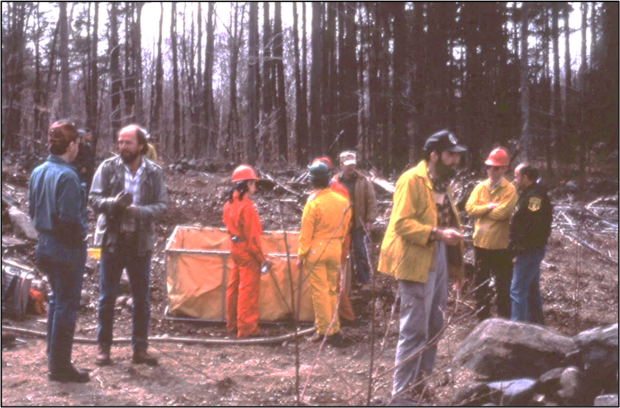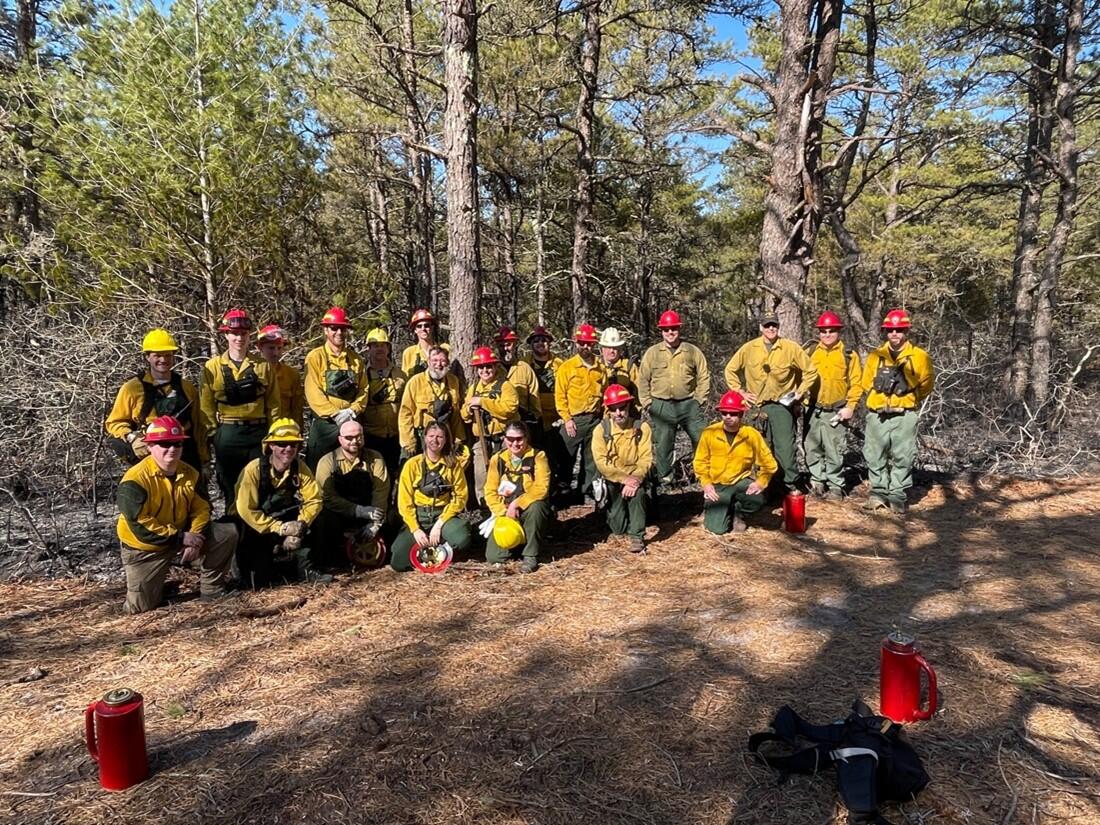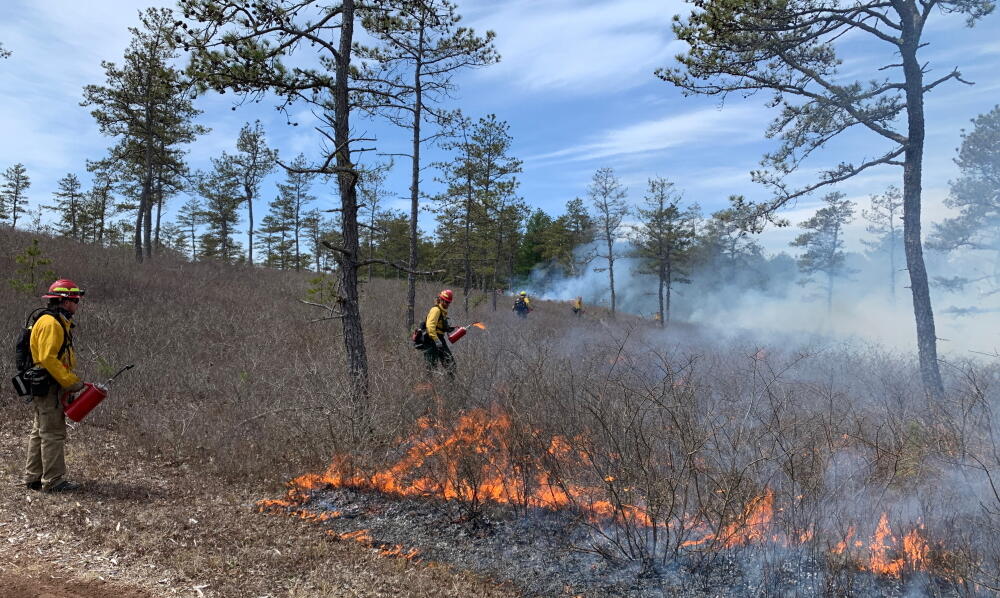- Division of Fisheries and Wildlife
Media Contact
Media Contact, MassWildlife
It's been a great year for wildlife and plants that rely on fire-adapted habitats. Why is that? Because MassWildlife, with help from many partners, has already conducted 21 prescribed fires on more than 900 acres of public land this spring. Prescribed fires are carefully planned and carried out to restore dwindling habitats that support declining wildlife. Over several decades, MassWildlife has built its prescribed fire program to a level that is having a major benefit to fire-influenced landscapes.
Fire is not new on the landscape; for thousands of years indigenous peoples burned the same lands MassWildlife now targets for prescribed fire. Fire suppression became common beginning in the 1920s. By the 1980s, fire exclusion had begun to fundamentally alter many natural landscapes in Massachusetts. Open habitats like grasslands and woodlands were disappearing along with the wildlife that relied on them. Once ecologists, land managers, and wildlife biologists started to understand the damage fire exclusion was having on some ecosystems, they began to reintroduce fire through prescribed burning.
From the start, application of prescribed fire in Massachusetts has been made possible by strong partnerships. In the mid-1980s, ecologists and biologists from UMass Amherst, Mass Audubon, The Nature Conservancy, National Park Service, The Trustees, Department of Conservation and Recreation (DCR), and MassWildlife started using prescribed fire to manage and improve priority grasslands and barrens habitat around the Quabbin Reservoir and Southeast Massachusetts including Plymouth, Cape Cod, and the Islands. The first prescribed burn on a MassWildlife Wildlife Management Area (WMA) took place in 1989 at Hiram Fox WMA in Chester.
Since that first prescribed burn, MassWildlife has steadily worked to increase staff skills, strengthen partnerships, and solidify policies—all with the goal of improving and restoring fire-influenced habitats important for wildlife. The program grew throughout the 1990s and early 2000s and focused on reintroducing fire into pine barrens and grasslands in Edgartown, Falmouth, Mashpee, and Montague. As the agency took on more restoration projects across the state, the prescribed fire program grew and over the last decade, the program has taken big steps forward.
Recent program highlights:
- 2013: Conducted 7 prescribed burns, 110 acres burned.
- 2014: Conducted 10 prescribed burns, 141 acres burned.
- 2015: New record set, with 16 burns in one year, and 6 assists to partners.
- 2016: For the first time, staff deployed to fight wildfires around the country where they gained experience and new skills. Staff worked on crews alongside Massachusetts DCR.
- 2017: Hired the first Prescribed Fire Program Manager, and the Massachusetts Fisheries and Wildlife Board adopted the MassWildlife Prescribed Fire Policy and Standards. Learn more…
- 2018: More than doubled previous annual record, with 421 acres burned.
- 2021: Hired National Wildfire Coordinating Group (NWCG) certified Burn Boss and conducted 26 burns on 822 acres. Staff fought wildfires in four different states as part of DCR and NPS crews. Read more…
- 2022: 35 staff from across the agency are now trained to work on prescribed fires. More than half have specialized training. So far in 2022, MassWildlife staff and partners, have completed 21 prescribed fires on more than 900 acres.
The steady, purposeful expansion of the prescribed fire program has a direct impact the wildlife of Massachusetts. This increase in prescribed fire activity improves habitat for more common wildlife such as American woodcock and ruffed grouse, but also for many rare and declining plants and animals, such as eastern whip-poor-will, grasshopper sparrow, federally and state rare plants, and numerous butterflies, moths, and native bees.
MassWildlife continues to plan restoration projects within fire-dependent ecosystems including oak woodlands, pine barrens, grasslands, and calcareous fens. Habitat management projects like these are vital as stressors including non-native insects, diseases, wildfires, climate change, and habitat fragmentation strain public lands and other open natural spaces. Prescribed fires help build resiliency in our ecosystems, and MassWildlife will continue to build resiliency in the agency fire team.
Learn more about MassWildlife's Prescribed Fire Program
- A Prescription for Fire
This article was published in Massachusetts Wildlife magazine in 2018 and outlines what's involved in planning a safe and effective prescribed fire. - Burning for Wildlife
This article was published in Massachusetts Wildlife magazine in 2021 and reveals how using prescribed fire in habitat restoration projects is helping animal populations in decline.



